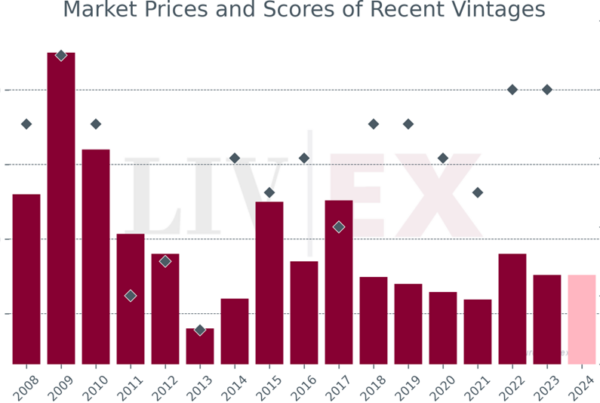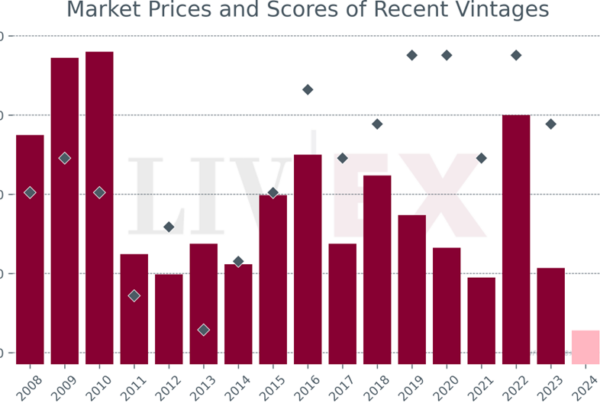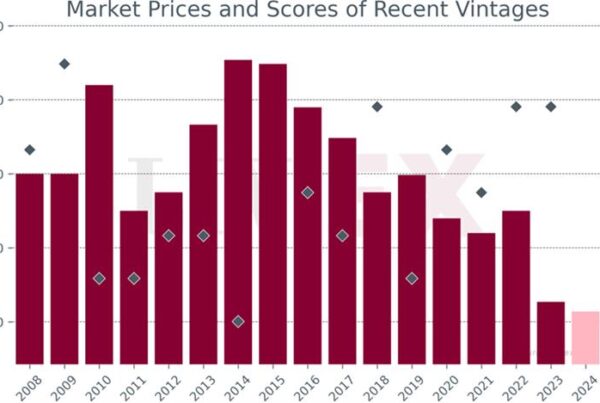Italian wines continue to offer one of the cheapest entry points into the fine wine market.
So far in 2019, the Italy 100 index has been the best performer (+5%) and the only Liv-ex 1000 sub-index to post consistent monthly gains.* However, some Italian wines have risen more than others.
Prices for the wines of the Piedmont have been climbing at a faster pace than those for the Tuscans. Nine out of the ten biggest risers from the Italy 100 in the past year come from the north, with Sassicaia 2015 being the notable exception. Since December 2017, the Piedmont Index is up 12%, compared to 0.2% for the Tuscan, as the chart below shows.
Piedmont’s impressive price performance can not only be attributed to the quality of its wines, but also to their rarity and exclusivity. The region has often been likened to Burgundy (the top-performing region since 2010) as its wines are typically made from a single grape variety in tiny quantities from small specialised vineyards.
Prices for the top wines of Tuscany have more often been influenced by their critical reception – much like top Bordeaux. Shortly after Wine Spectator’s announcement that Sassicaia 2015 was their wine of 2018, for instance, the wine leapt in price and was soon traded 54% above its release price.
Piedmont vs Tuscany index performance

Despite these gains, the top wines of Italy (from both Tuscany and Piedmont) continue to represent one of the most affordable categories in the fine wine market.
As the table below shows, the average price (12×75) of the Tuscans (Italy, South) Solaia, Sassicaia, Tignanello, Ornellaia and Tua Rita Redigaffi positions them well below Bordeaux’s finest. They have increased 3% in value over the past two years.
Although Piedmont’s (Italy, North) prices are higher – more than double that of the Super Tuscans – top Barolo and Barbaresco is still less than half the price of Bordeaux and a quarter of the price of red Burgundy. They have moved 22% over the same period.
Regional “Firsts” average Market Prices – two years

Due to a combination of relatively low prices and comparable quality, both Tuscany and Piedmont are garnering greater interest from merchants and collectors alike.
*The Italy 100 tracks the price performance of the ten most recently physical vintages of ten leading Italian wines that attract a regular market on Liv-ex. The index, which is based on transactional data, is weighted towards the Super Tuscans where large production fuels an active market.
Looking for more? Read our latest extended report, The fine wines of Italy: past, present and future, which contains detailed analysis on the emergence of Italy’s top wines over recent years and the impact that technology has on their future.
For Liv-ex members, there are currently a number of live Italy offers. These include wines from Tuscany and Piedmont, but also from Sardinia, Sicily, Lombardy and Puglia. If you are interested, please do take a look at www.liv-ex.com, or email your Account Manager who would be pleased to send you the list in Excel format.



